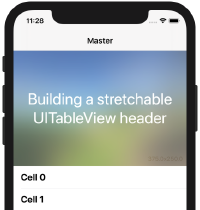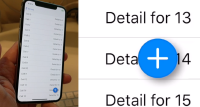🎉 Celebrating my two-year anniversary at Okta

Building a stretchable UITableView header

Someone on Twitter recently asked how to implement a TableView header that will stretch and resize as the content is scrolled, so I thought I’d spend a few minutes to provide a good example. Since I thought it’s a neat trick that’s often overlooked, I felt it was worthy of wrapping a post around it to explain how it works, maybe giving others the ability to replicate this pattern for themselves.
UIMotionEffect: Easily adding depth to your UI

One of the “delightful” features of iOS is the almost imperceptible UI effects they add to give the illusion of depth. One of the most under-appreciated features is UIMotionEffect, which ties the device’s gyroscope to your views to make them adapt to how the user moves their phone.
This can be seen throughout iOS, from your lock screen to your app icons in Springboard (the iOS app launcher). Done right, the user won’t consciously notice these views moving, but it helps set certain views apart from the rest of the app’s UI, helping them “pop” and be more noticeably separate from the rest of the app.
In this post I’ll go over what UIMotionEffects are, how they work, and will share my approach for simplifying how to add motion effects throughout your application.